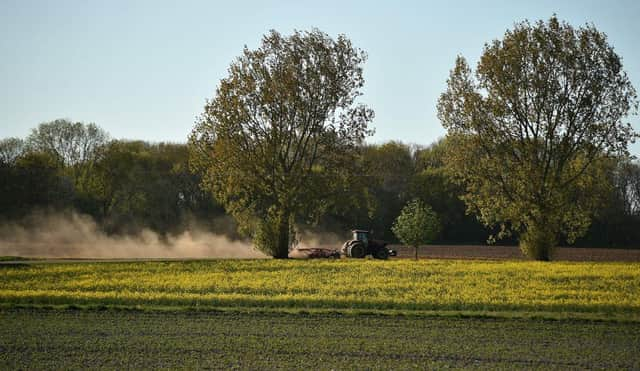Older farmers could be paid to retire under new scheme


In a bid to breathe new life into the farming industry in the North East the government has announced plans to introduce a ‘retirement scheme’ as part of its proposed reforms to agricultural support in England.
Farmers currently receive direct payments under the Basic Payment Scheme (BPS) which are paid on a flat rate per acre basis. However, this will be phased out by 2027 and replaced by a number of schemes designed to encourage more environmentally friendly farming.
Advertisement
Hide AdAdvertisement
Hide AdThe proposed retirement scheme would give participating farmers in the North East a lump sum payment in 2022, amounting to roughly the same amount they would have received through BPS between 2022 and 2027.
“In a post-Brexit world, the government’s intention is to help to modernise the agricultural industry to increase productivity through technological advancement and modernisation whilst encouraging succession planning and retirement to ensure that younger ‘progressive’ farmers in the North East are in occupation and control of the land,” Carter Jonas Patner James Bradley says.
“The average age of farmers is around 60 and a major hurdle to succession planning is a lack of retirement provision and housing, particularly for tenant farmers.
“This is an all-or-nothing scheme with a commitment to leave the industry, preventing partial or phased retirement.”
Advertisement
Hide AdAdvertisement
Hide AdAlthough the proposed move is well-intentioned and a step in the right direction, it won’t suit everyone.
“The principle behind the scheme is right, providing the farmer receives an adequate net sum,” says Mr Bradley. “Sole traders in the North East who are approaching retirement age and should be considering their future and making succession plans stand to benefit the most.
“But it probably won’t suit those businesses with complicated structures – it would be a more complex process for those with multiple partners or directors, as each decision affects more than one person.”
The proposed basic principles of the scheme include:
■ To be eligible the farmer must have claimed BPS payments in 2015.
Advertisement
Hide AdAdvertisement
Hide Ad■ The lump sum will be based on the average BPS payments received from 2018-2020.
■ The amount paid will be 2.35 x the reference amount and will be capped at £100,000.
■ The retiring farmer must then sell or rent out at least 95% of his land; if renting, the land must be rented out for a minimum period of 5 years.
■ The retiring farmer and any partner or co-director of a partnership or company of which the farmer is a member cannot claim any more direct payments and if they enter a new management agreement such as Countryside Stewardship or ELMS then the lump sum would have to be repaid.
Advertisement
Hide AdAdvertisement
Hide Ad“As always, the devil will be in the detail and there are some significant questions still to be answered,” says Mr Bradley.
“We don’t yet know if the exit scheme would be treated as capital or income for taxation purposes – the answer to this question will have a significant bearing on its take-up.”
The proposed scheme would not suit those businesses where the older and younger generations are farming in partnership, as the latter would not want to forgo their right to claim future direct payments or be precluded from entering new environmental schemes.
However, one instance where the scheme could prove of particular benefit is during retirement discussions between landlords and tenants.
Advertisement
Hide AdAdvertisement
Hide Ad“It should encourage, and ought to encourage, landlords and tenants in the North East to talk about a retirement package that would be of mutual benefit,” Mr Bradley advises.
As well as giving landlords an opportunity to begin discussions, this scheme also affords the opportunity to build a package that suits everyone.
“The landlord would be able to get the farm back in hand, which they can then re-let or sell. This will be of particular interest to anyone who granted a tenancy before 1995,” Mr Bradley says.
“After that date, any tenancy gets 100% agricultural property relief (APR), but before it the landlord would only receive 50%. So, it’s a big advantage for a landlord to have a new tenant in place with a new tenancy as that would qualify for 100% APR.
Advertisement
Hide AdAdvertisement
Hide Ad“This situation also benefits the existing tenant as the landlord should be able to pay them over and above the Defra payment as part of a package.”
Defra is currently consulting on these proposals and farmers in the North East are encouraged to share their views before the deadline of 19 August.
“Timing remains uncertain but further details are anticipated by November 2021,” Mr Bradley says. “Doubts remain as to whether the exit scheme will prove sufficiently financially attractive to encourage a significant number of farmers to retire to meet Defra’s objectives.
“However, appropriate advice should be sought in good time so an informed decision can be taken early next year.”